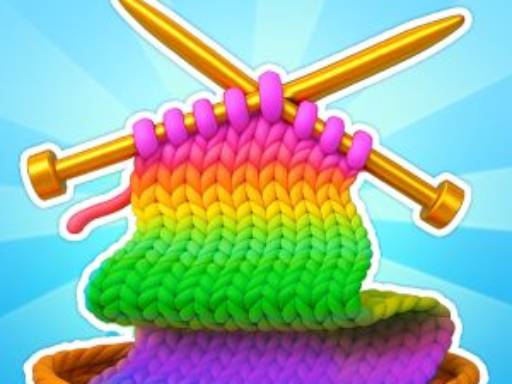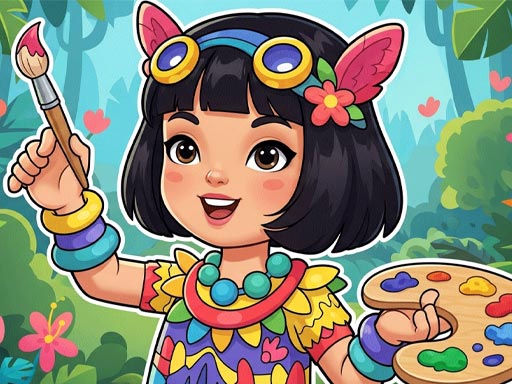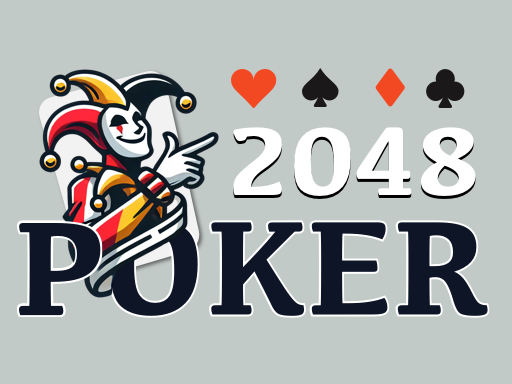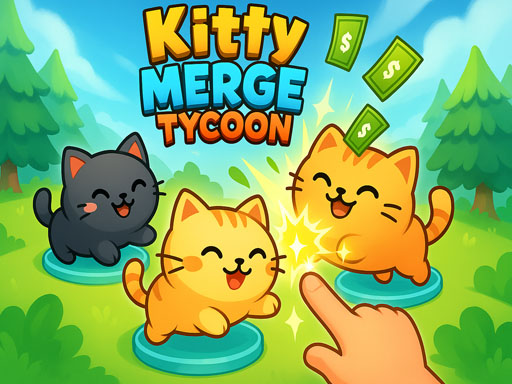Gridflow Logic
About Gridflow Logic
Dude, you *have* to hear about this game I found. Seriously, I know I’m always telling you about some new indie gem or a retro title I’ve rediscovered, but this one… this one’s different. It’s called Gridflow Logic, and I swear, it’s like someone reached into my brain and pulled out the exact puzzle game I didn’t even know I was craving. You know how much I love those elegant, deceptively simple experiences that just *click*? This is that, amplified.
I stumbled upon it online, just messing around, looking for something to kill a few minutes. The description was pretty straightforward: connect dots of the same color on a grid. My first thought was, "Okay, seen that before, probably a mobile game with too many ads." But man, was I wrong. From the moment the first level loaded, I could tell there was something special here. The colors are so vibrant, almost glowing against the clean grid lines. It’s visually satisfying right off the bat, you know? Like, aesthetically pleasing in a way that just makes your brain happy before you even start moving.
You kick off with these tiny grids, maybe 5x5, with just a couple of color pairs. And honestly, it *feels* easy. You click a red dot, drag a line to its matching red dot, and boom, it lights up, a smooth, flowing path. Then you do the blue ones, the green ones. It’s almost meditative, this initial stage. You’re just tracing lines, filling in the spaces, and there’s this immediate, almost childlike satisfaction in seeing the grid fill up with these vibrant, interconnected paths. It’s like a digital coloring book, but with a purpose. And that’s the hook, right? It lulls you into this sense of calm, this feeling of mastery. "I got this," you think. "This is nice, a chill little brain teaser."
But then, oh man, then the grid starts to grow. And the number of color pairs multiplies. And suddenly, those simple, elegant lines you were drawing start to become obstacles. This is where the "Logic" part of Gridflow Logic truly shines, and it’s brilliant. The core rule, the one that elevates it from a simple tracing game to a genuine mind-bender, is that your lines can’t cross. Ever. And you have to connect *all* the dots of the same color, and you have to fill *every single square* on the grid.
That’s where the magic happens, dude. You’ll be staring at a 10x10 grid, maybe even bigger, with eight or ten different color pairs scattered across it like a handful of spilled jewels. You’ve got a red dot in the top left, its partner in the bottom right. A blue dot in the middle, another just a few squares away. And you start, confidently, connecting a couple of pairs. You draw a nice, sweeping green line, feeling good about yourself. Then you go to connect the yellow dots, and suddenly, that perfect green line is right in your way. You can’t go through it. You can’t go over it. You have to find another path.
And that’s when you realize the true depth of the game. It’s not just about connecting points; it’s about spatial reasoning, about foresight, about seeing the entire puzzle as one interconnected system. You can almost feel your brain physically re-wiring as you play. What I love about games like this is that initial moment of frustration, where you feel like you’ve painted yourself into a corner, where every move seems to block off three other potential paths. You try one route, it fails. You undo it, try another. You hit a wall. You undo *that*. And then, you know that feeling, that glorious, electric spark when a strategy finally clicks into place? That’s Gridflow Logic in a nutshell.
You’ll be staring at the screen, maybe for a minute, maybe for five, your eyes tracing invisible paths, trying to mentally map out the flow. "Okay, if the red goes *this* way, then the blue *has* to go *that* way, but then where does the green go?" It’s like a mental dance, a ballet of lines and colors. And then, suddenly, you see it. The elegant solution. The one path that allows every single color to connect without overlap, filling every last square. You start drawing, cautiously at first, then with growing confidence as each line slots perfectly into place, a beautiful, vibrant tapestry unfolding before your eyes.
There's something truly magical about watching the last line snap into position, the entire grid lighting up with a satisfying little shimmer, signaling your victory. It’s not a loud, bombastic celebration; it’s a quiet, profound sense of accomplishment. It’s the feeling of your brain having done something clever, something elegant. And then, before you even realize it, the next level loads, a slightly bigger grid, a slightly more complex arrangement of dots, and you’re immediately drawn back in. "Just one more," you tell yourself. And then it’s three in the morning, and you’ve lost track of time, completely absorbed in the vibrant, flowing logic of the game.
In my experience, the best moments come when you’re utterly convinced a level is impossible. You’ve tried every permutation you can think of, and nothing works. You’re about to give up, maybe even close the browser. But something keeps you there, that little itch in your brain, that nagging feeling that there *has* to be a solution. And then, you shift your perspective, maybe you start with a different color pair, or you try to box in a particularly tricky set of dots first, and boom! The whole puzzle unravels. It’s like untangling a really stubborn knot, and the relief and satisfaction are just immense.
What's fascinating is how the game teaches you without ever explicitly telling you anything. You learn through trial and error, through observation. You start to recognize patterns, common choke points, optimal ways to route certain colors. You develop an intuition for the "flow" of the grid, understanding how each line impacts the potential paths of all the others. The brilliant thing about this is that it never feels like a chore; it always feels like a discovery. You’re not just solving puzzles; you’re refining your own problem-solving process.
This makes me wonder about the design choices, actually. The simplicity of the rules is what makes the complexity so impactful. There are no power-ups, no timers, no distractions. It’s just you, the grid, and your brain. And that purity is incredibly refreshing. You can take your time, strategize, undo mistakes without penalty. It’s a truly zen experience, despite the mental workout it provides. You can almost feel the tension in your shoulders as you wrestle with a particularly tricky layout, and then the complete relaxation as the final connection is made.
You know, I’ve always been drawn to games that make you think, that reward patience and careful planning over twitch reflexes. And Gridflow Logic absolutely nails that. It’s not about speed; it’s about precision and elegance. It’s about finding that perfect path, that one solution that fits like a key in a lock. And the sheer number of levels means you’ll be immersed for hours, days even. Just wait until you encounter some of the really massive grids, where you have to route lines across almost the entire board, snaking them around a dozen other connections. The real magic happens when you pull off one of those, when you orchestrate a symphony of color that perfectly fills the entire space.
Honestly, it’s one of those games that makes you feel genuinely smarter after playing it. It hones your spatial awareness, your logical deduction, your ability to plan several steps ahead. And it does it all with such a charming, colorful presentation that it’s impossible not to be drawn in. It’s not just a game; it’s a delightful mental workout, an escape into a world of pure, satisfying logic. Trust me on this one, you need to check out Gridflow Logic. It’s addictive in the best possible way, and I guarantee you’ll find yourself losing track of time, completely engrossed in the beautiful challenge of connecting those colorful dots. You'll thank me later.
I stumbled upon it online, just messing around, looking for something to kill a few minutes. The description was pretty straightforward: connect dots of the same color on a grid. My first thought was, "Okay, seen that before, probably a mobile game with too many ads." But man, was I wrong. From the moment the first level loaded, I could tell there was something special here. The colors are so vibrant, almost glowing against the clean grid lines. It’s visually satisfying right off the bat, you know? Like, aesthetically pleasing in a way that just makes your brain happy before you even start moving.
You kick off with these tiny grids, maybe 5x5, with just a couple of color pairs. And honestly, it *feels* easy. You click a red dot, drag a line to its matching red dot, and boom, it lights up, a smooth, flowing path. Then you do the blue ones, the green ones. It’s almost meditative, this initial stage. You’re just tracing lines, filling in the spaces, and there’s this immediate, almost childlike satisfaction in seeing the grid fill up with these vibrant, interconnected paths. It’s like a digital coloring book, but with a purpose. And that’s the hook, right? It lulls you into this sense of calm, this feeling of mastery. "I got this," you think. "This is nice, a chill little brain teaser."
But then, oh man, then the grid starts to grow. And the number of color pairs multiplies. And suddenly, those simple, elegant lines you were drawing start to become obstacles. This is where the "Logic" part of Gridflow Logic truly shines, and it’s brilliant. The core rule, the one that elevates it from a simple tracing game to a genuine mind-bender, is that your lines can’t cross. Ever. And you have to connect *all* the dots of the same color, and you have to fill *every single square* on the grid.
That’s where the magic happens, dude. You’ll be staring at a 10x10 grid, maybe even bigger, with eight or ten different color pairs scattered across it like a handful of spilled jewels. You’ve got a red dot in the top left, its partner in the bottom right. A blue dot in the middle, another just a few squares away. And you start, confidently, connecting a couple of pairs. You draw a nice, sweeping green line, feeling good about yourself. Then you go to connect the yellow dots, and suddenly, that perfect green line is right in your way. You can’t go through it. You can’t go over it. You have to find another path.
And that’s when you realize the true depth of the game. It’s not just about connecting points; it’s about spatial reasoning, about foresight, about seeing the entire puzzle as one interconnected system. You can almost feel your brain physically re-wiring as you play. What I love about games like this is that initial moment of frustration, where you feel like you’ve painted yourself into a corner, where every move seems to block off three other potential paths. You try one route, it fails. You undo it, try another. You hit a wall. You undo *that*. And then, you know that feeling, that glorious, electric spark when a strategy finally clicks into place? That’s Gridflow Logic in a nutshell.
You’ll be staring at the screen, maybe for a minute, maybe for five, your eyes tracing invisible paths, trying to mentally map out the flow. "Okay, if the red goes *this* way, then the blue *has* to go *that* way, but then where does the green go?" It’s like a mental dance, a ballet of lines and colors. And then, suddenly, you see it. The elegant solution. The one path that allows every single color to connect without overlap, filling every last square. You start drawing, cautiously at first, then with growing confidence as each line slots perfectly into place, a beautiful, vibrant tapestry unfolding before your eyes.
There's something truly magical about watching the last line snap into position, the entire grid lighting up with a satisfying little shimmer, signaling your victory. It’s not a loud, bombastic celebration; it’s a quiet, profound sense of accomplishment. It’s the feeling of your brain having done something clever, something elegant. And then, before you even realize it, the next level loads, a slightly bigger grid, a slightly more complex arrangement of dots, and you’re immediately drawn back in. "Just one more," you tell yourself. And then it’s three in the morning, and you’ve lost track of time, completely absorbed in the vibrant, flowing logic of the game.
In my experience, the best moments come when you’re utterly convinced a level is impossible. You’ve tried every permutation you can think of, and nothing works. You’re about to give up, maybe even close the browser. But something keeps you there, that little itch in your brain, that nagging feeling that there *has* to be a solution. And then, you shift your perspective, maybe you start with a different color pair, or you try to box in a particularly tricky set of dots first, and boom! The whole puzzle unravels. It’s like untangling a really stubborn knot, and the relief and satisfaction are just immense.
What's fascinating is how the game teaches you without ever explicitly telling you anything. You learn through trial and error, through observation. You start to recognize patterns, common choke points, optimal ways to route certain colors. You develop an intuition for the "flow" of the grid, understanding how each line impacts the potential paths of all the others. The brilliant thing about this is that it never feels like a chore; it always feels like a discovery. You’re not just solving puzzles; you’re refining your own problem-solving process.
This makes me wonder about the design choices, actually. The simplicity of the rules is what makes the complexity so impactful. There are no power-ups, no timers, no distractions. It’s just you, the grid, and your brain. And that purity is incredibly refreshing. You can take your time, strategize, undo mistakes without penalty. It’s a truly zen experience, despite the mental workout it provides. You can almost feel the tension in your shoulders as you wrestle with a particularly tricky layout, and then the complete relaxation as the final connection is made.
You know, I’ve always been drawn to games that make you think, that reward patience and careful planning over twitch reflexes. And Gridflow Logic absolutely nails that. It’s not about speed; it’s about precision and elegance. It’s about finding that perfect path, that one solution that fits like a key in a lock. And the sheer number of levels means you’ll be immersed for hours, days even. Just wait until you encounter some of the really massive grids, where you have to route lines across almost the entire board, snaking them around a dozen other connections. The real magic happens when you pull off one of those, when you orchestrate a symphony of color that perfectly fills the entire space.
Honestly, it’s one of those games that makes you feel genuinely smarter after playing it. It hones your spatial awareness, your logical deduction, your ability to plan several steps ahead. And it does it all with such a charming, colorful presentation that it’s impossible not to be drawn in. It’s not just a game; it’s a delightful mental workout, an escape into a world of pure, satisfying logic. Trust me on this one, you need to check out Gridflow Logic. It’s addictive in the best possible way, and I guarantee you’ll find yourself losing track of time, completely engrossed in the beautiful challenge of connecting those colorful dots. You'll thank me later.
Enjoy playing Gridflow Logic online for free on Qotori games. This Puzzle game offers amazing gameplay and stunning graphics. No downloads required, play directly in your browser!
How to Play
Mouse to play





Comments
This game is awesome! I love the graphics and gameplay.
One of the best games I've played recently. Highly recommended!